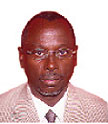In 1972 Stanislav Andreski, a sociology professor at the University of Reading, published a delightfully provocative book about the scientific pretensions of social science investigation at the time.


In 1972 Stanislav Andreski, a sociology professor at the University of Reading, published a delightfully provocative book about the scientific pretensions of social science investigation at the time. His broad conclusion on the matter was that most of the methodology was pseudo-scientific, or in his words, "most of what passes as scientific study of human behaviour boils down to an equivalent of sorcery”. He was dismissive of their claims to truth. He noted that many social scientists make the claims they do, not because they have corroborated, diverse evidence supporting them as descriptors of reality, but rather because they desire their opinions to become reality.Andreski was writing about social science practitioners, especially psychologists, conferences and publications that were mushrooming everywhere, all claiming to understand, explain and provide answers to the individual and societal condition. They all craved recognition as scholarly, scientific and relevant and worth serious attention.He might very well have been writing about today and the proliferation of various reports, indices of every sort and such like from think tanks, foundations and similar bodies that sprout all too frequently. The indices of today, like the social scientists Andreski criticised, purport to measure anything – from the highly subjective subjects such as the state of a society’s well-being or perception of itself to the easier to measure economic development.Today, anyone with the money or financial backing, or a cause to push can set up a foundation and commission a study into any imaginable thing. It is not far-fetched to imagine a Global Sex Orientation and Development Index with the finding that Africa remains underdeveloped because of its refusal to recognise GLBT (Gay, Lesbian, Bisexual and Trans-sexual) rights.All the reports, including the above hypothetical one, employ various scientific investigative methodologies, including a liberal splash of statistics, to convince us of their validity. In reality, however, most of the methodology is either faulty or self-serving, designed to reach a pre-determined conclusion.The latest such Index to fit this description is the Institute for Economics and Peace’s Global Peace Index Report for 2013 that claims to measure the level of peace in 162 countries. The findings are startling. Countries, whose defence budgets are a mindboggling multi trillions of dollars, where arsenals of conventional weapons and those with a mass destruction capability (real WMD not the made up stories of Saddam Hussein’s arsenal) can obliterate the earth at the touch of a button, are listed among the most peaceful. Countries where gunmen walk into a school and shoot to death school children and their teachers, where organised crime and drug dealers rule the streets and eavesdropping on citizens’ private conversations is the norm are presented as the very model of peace.On the other hand, where crime of any sort is so low as to be almost negligible (statistically), where citizens can freely talk in their sleep without the fear of someone listening in on their dreams, are surprisingly listed as among the least peaceful. Rwanda was ranked 135 out of 162 countries surveyed. Rwandans and those who visit Rwanda regularly find this ranking difficult to understand. Foreign Affairs minister Louise Mushikiwabo was prompted to respond: "Anybody who thinks Rwanda is not peaceful certainly doesn’t have information or measures backwards”.Professor Anastase Shyaka, CEO of Rwanda Governance Board, faulted the report’s methodology, pointing out that in the 22 qualitative and quantitative indicators used to measure peace, there was systematic mismatch between scores attributed to Rwanda and the reality on the ground.The Global Peace Index Report follows other reports that have misrepresented the real situation in Rwanda. We have seen the Mo Ibrahim Report on governance and the various media and human rights groups’ reports. They all have one thing in common. Their objectivity is questionable because they tend to push a propaganda line. Their methods cannot be trusted because they measure difficult to quantify indicators and are selected to fit the chosen line. Like the scientific pretensions of the social scientist Andreski criticised four decades ago, today’s various reports can be dismissed as sorcery or propaganda. Reports such as the Global Peace Index confirm Andreski’s observation that they tend to express their authors’ desire to have their opinions or wishes become reality and that sophisticated statistical language lends scientific air to their pet hypotheses.To be fair, the reports sometimes carry some truth. There are cases where no amount of statistical manipulation will alter facts.But there are other cases where such reports conceal other insidious motives. They are means with which to flog those countries that will not easily fall into line. The method is simple. Show the irreverent lot who want to go their independent ways that they are nothing after all, that they are no better than the rest, that what they say are achievements are simply hollow claims.More dangerously, it has the effect of sowing doubts and undermining confidence among ordinary citizens and foreigners alike (friends, partners and visitors) that what you see is not what actually is. That is the intended impact of sorcery – to cause uncertainty, disbelief and confusion in one’s own ability on the one hand and create dependence on the sorcerer to unravel complicated things for you on the other.Were Stanislav Andreski alive today, he would certainly warn us against the sorcery of today’s reports and indices. He would be right.josephrwagatare.wordpress.com


